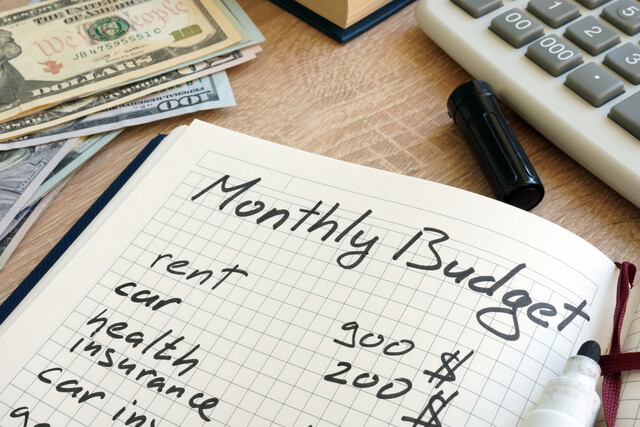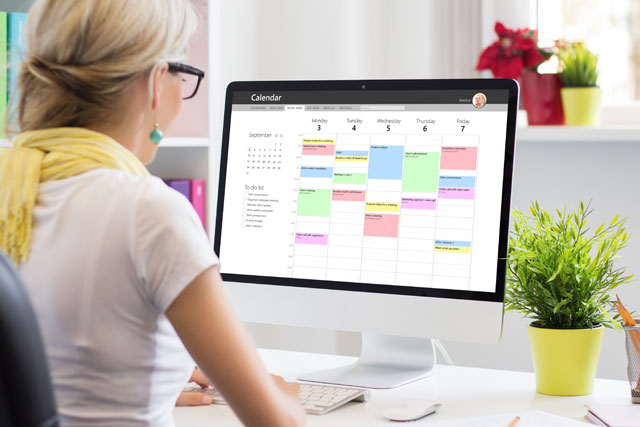Rehearsing Your Speech for an Effective Presentation
We will take a step-by-step approach to describing the best way to rehearse.
3. Videotaping your speech. It is also a good idea to videotape your speech. Just as some people are uncomfortable hearing their own voice, many people do not like to see themselves on video. However, watching the video will be a great way to boost your confidence and to practice your delivery.
4. Ask one person to be your audience. Ask someone you know who will give you honest feedback to listen, and watch, your rehearsal. Even if you watch your videotape or listen to your recording a hundred times, you will still miss something that a different pair of eyes and ears will discern. It is always desirable to get the benefit of someone else's opinion.
6. Monitor your mannerisms. While you are watching your speech on videotape, you should pay particular attention to your mannerisms. We typically do not notice, or even know we have, certain mannerisms. However, watching ourselves on videotape will provide you with an excellent opportunity to see yourself in action and notice some mannerisms that perhaps should be avoided.
7. If possible, practice at the site of your speech. This is not always possible, of course, but it is an extremely valuable opportunity if you can do so. Practicing at the site will ensure that you will have few surprises on the day of delivery. You will know the look and feel of the place and when you arrive to give your speech, it will be familiar ground.
8. Be sure to practice with your visual aids. This is a common mistake beginning public speakers make. They assume that the important part is to practice their verbal delivery and that it is easy to refer to visual aids. Not so. You want to ensure that you know exactly how, and when , you are going to incorporate your visual aids into your speech. Make notes in your speech on when you will use which aid.
9. Practice with some background noise. To better prepare using a more realistic setting, play some light background music while you are rehearsing your speech. This will mimic some of the noise you will hear while you are giving a speech. It is surprising for some people to know just how much noise an audience can make while listening to a speech, and this can be disconcerting for some speakers.
An important part of your rehearsal process will be the preparation of materials you will have during the delivery of your speech. It is on these materials that you will be making notes as you listen to your voice recording or videotape. Most speakers use one of two options, a printed version of their entire speech, word for word, or note cards. Let us look at both options.
Note cards accomplish three goals, they can contain the right amount of information for you to remember important points in your speech, they are easy to use, and they will not be seen by an audience.
Note cards can be index cards, 3-by-5 inch cards. You can easily fit these cards in your pocket and then take them out when you arrive at the podium. The audience never has to see them. Make sure the cards are numbered in numerical order. This is very important because your cards will be sorted in the order in which you will be delivering your speech. If you drop your cards, it might be disastrous to remember the proper order.
On each card, you will write the main point for each section of your speech, and then the important evidence that you will be citing as support for your main point. You will also make notes about inflection and placing emphasis on certain points.
As an alternative, you could rehearse with the entire text of the speech. For very important speeches, this is considered standard practice, even if you are a seasoned professional. In addition to important speeches, here are some other situations when a full text version is recommended.
-
Every word is vitally important, for example, a political speech.
-
Your time limit is very strict and you cannot deviate from your prepared remarks.
-
You are extremely nervous. Having the full speech in front of your will relax you.
Eye contact, the way you move on stage, and the motions you make is an important part of your message. In fact, there are speech experts who have concluded that the words we use account for less than 40 percent of our message delivery. The rest is communicated through body language and other nonverbal communication. You want to use these movements to your advantage, and you do not want the audience to misunderstand them.
The main obstacle that most people have with poor body language is that they are unaware that they are using such language. The majority of people are not conscious of receiving nonverbal communication from a speaker, but we do register a great deal of thought and we constantly draw conclusions throughout a speech. Therefore, it is often difficult to control what you are not conscious of. This is why rehearsal with a videotape becomes invaluable. It gives you an opportunity to see your body language and to make any necessary adjustments.
Your speech does not begin the moment you start speaking at a podium. Your speech begins the moment the audience sees you. This could be while you are walking toward the stage or across the stage to the podium. First impressions are vitally important for a public speaker, and the audience will form an opinion about before you speak even your first word.
Here are some tips on how to approach a podium before you begin speaking.
-
Walk in an energetic, comfortable manner, but not quickly.
-
If you are using a full text version of your speech, hold it inconspicuously, and then arrange it quickly on the podium.
-
If you are using note cards, pull them out of your pocket after you have arrived at the podium, not while walking toward it.
-
Hold you head up and do not look at the floor. When you arrive at the podium, make sure you are looking directly at the audience.
-
Pause for a moment and take an inconspicuous deep breath before you begin speaking.
It is an established fact of public speaking that the more eye contact you make with an audience, the more effective you message will be communicated. Try to select several members of the audience and make eye contact with them throughout the speech. It could be people you know well who are there to support you, or you can select a stranger. However, be careful not to make eye contact with the same person constantly unless they are a close friend and have given you permission to do so. Too much eye contact with the same person will make that person uncomfortable.
If you are nervous, it is best to keep your hands on the podium at all times, out of sight of the audience. Nervous people tend to have shaky hands, and this will be seen by the audience. You should refrain from drinking water during a speech if you are nervous because your hands will be shaking and the glass will too. If the speaker feels that the audience is noticing this, it will make the speaker even more nervous. However, if you are comfortable using your hands to make gestures during a speech, it is a powerful way of communicating your message.
Here are some gestures that will help you to connect with an audience.
-
Emphatic gestures. These can be used to emphasize a point strongly. Perhaps you are delivering a motivational speech and you want the audience to become involved in something. You can point to them. This is not considered rude. They will feel as if they are involved in your speech. Other emphatic gestures include making a fist, and sweeping your hand in the air to motion to the audience.
-
Using fingers to count points. When people are giving a list to someone else, they often use the fingers on their hands to count them. "Number 1. Get milk, number 2. Get bread, and so on." In a speech, this is often a subtle but very powerful way of letting the audience know that you are enumerating several important points that they should understand.
-
Descriptive gestures. We all know that a picture is worth a thousand words and if a picture is vital to your message, you will have a visual aid. However, if you have not prepared a visual aid and you want to give the audience a general idea of the object you are referencing, you can draw a picture with your fingers and hands.
If you are not using a podium, you may simply be standing on a stage and addressing an audience. If this is the case, you should, contrary to popular belief, keep stage movements at a minimum. No one wants to see someone moving back and forth on a stage while they are giving a speech. It will look amateurish. The simple rule of thumb is to move when it is required, and not much more than that. If you are using a chart, for example, you might occasionally have to walk toward it, and then you can move back to center stage. However, keeping your movements to a minimum will serve you best.
Nonverbal communication is especially important when you are visiting a foreign country. You may be speaking in front of an audience who knows your language, or you might have a translator. Either way, the gestures you think are appropriate in your native country might not be appropriate elsewhere. If you are not absolutely certain about the use of certain hand gestures or body movements, do not make them. It is perfectly acceptable to remain at the podium with your hands on the podium throughout your speech.
We all know by now that you must thoroughly research your audience before you arrive for your speech, and this is especially important when you are visiting a foreign country. However, in addition to research, it is important to convey to a foreign audience that you are honored to have been invited to speak to them. You are an ambassador of your native country and there are some people in the audience who will know some positive and negative stereotypes of your native country. One particularly powerful tactic a speaker can use is to rehearse at least one line of your speech in the foreign language. Make sure that the line is very important or, at the very least, would be very warmly received by the audience. You do not need to speak it perfectly, the audience will be very forgiving and they will be impressed that you made an effort. Either at the beginning or at the end of your speech, deliver this line and you will immediately gain a high level of rapport with the audience.
Most foreign audiences are delighted to see and hear a foreign speaker. Make it a rewarding experience for both you and the audience.






























